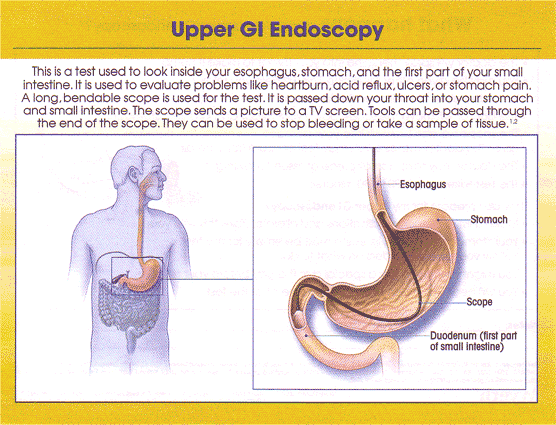Gastroscopy (EGD)
Gastroscopy is a relatively simple endoscopic test whereby the esophagus, stomach and duodenum can be evaluated by your gastroenterologist. A thin tube with a digital camera on the tip, is passed through the mouth into the esophagus, and then into the stomach and small intestine. The patient fasts after midnight, is sedated with intravenous medications and rarely remembers anything about the test. There is no pain with or after the test. Complications rarely ever occur. We can diagnose problems such as Barrett’s Esophagus, esophagitis, esophageal ulcers, gastritis, gastric ulcers, cancer or polyps, abnormal blood vessels and duodenal ulcer or celiac sprue. Biopsies may be taken through the scope itself, and polyps may be removed.
Since you will be sedated, a driver is required. The test itself takes under 15 minutes, then 30 minutes to recover from the sedation. You may eat when you get home and go to work or your usual activities the following day.
Reasons for gastroscopy could range from trouble swallowing, chronic heartburn, abdominal pain, nausea, vomiting, vomiting blood, black stools, or getting a full sensation with very small meals.
If necessary, strictures of the esophagus can be dilated with balloons or rubber dilators, to open up the esophagus and resolve any trouble swallowing meats, bread, or rice.
Patient preparations for a Gastroscopy can be read in the Gastroscopy Instructions Sheet.
The diagram below depicts a routine Gastroscopy:

